Penelope was the queen of Ithaca and the wife of Odysseus. She and her son, Telemachus, who was just born at Odysseus’ departure for the battlefield of Troy, wait patiently for Ulysses’ return. While he’s away for 10 years at the war and 20 years returning, she is beset by 108 suitors, who take up residence and plague her with their proposals. One of her tricks was to weave a burial shroud for Odysseus’ father, Laertes: weave during the day and undo it at night.
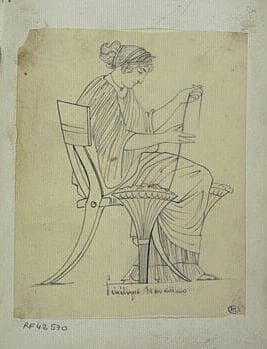
Adolphe Yvon: Penelope at her work, 2nd half of 19th century, copied from an Attic pottery figure (Paris: Musée du Louvre, département des Arts graphiques)
When her deception is discovered, the suitors push for her to decide who she will marry.
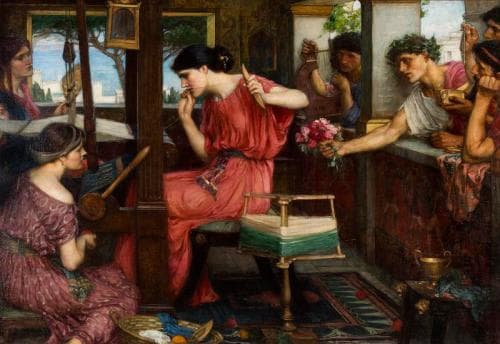
John William Waterhouse: Penelope and the Suitors, 1912
(Aberdeen City Council Archives, Gallery and Museums Collection)
Ulysses, in the guise of a beggar, returns, recognised only by his faithful dog. She then makes her marriage decision: whoever can string Ulysses’ stiff bow and put an arrow through 12 axe heads will be her new husband. No one, of course, can string the bow except Ulysses and, now that he’s newly armed, proceeds to kill the suitors, starting with their leader, Antinous. Ulysses has the help of Telemachus, and two slaves….and Athena. In the original myth, Penelope has one last test for Ulysses that he passes easily: please move the marriage bed. Ulysses, who built the bed, knows that it cannot be moved since one leg is a living olive tree. Since none of the suitors knows this detail, Penelope is assured that it truly is her husband’s return after so many decades. The opera ends with the death of the suitors.
Fauré’s drame lyrique Pénélope was completed in 1912 and given its premiere at the Monte Carlo Opera on 4 March 1913.
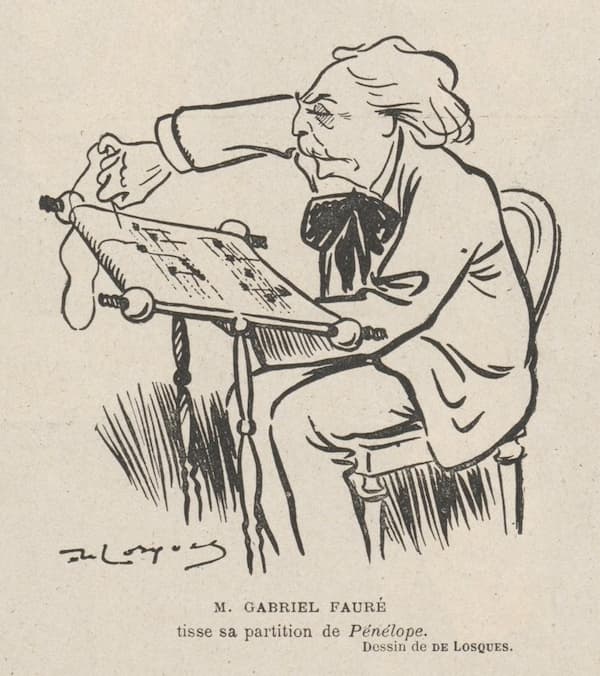
Daniel de Loscques: ‘Gabriel Fauré tisse sa partition de Pénélope’. ‘Gabriel Fauré weaves his score of Pénélope’, 1913
(Le Rire, Gallica: bpt6k6246463j_10)
The soprano Lucienne Bréval took the title role, and it was she who both encouraged Fauré in the project and introduced him to René Fauchois, who wrote the libretto.
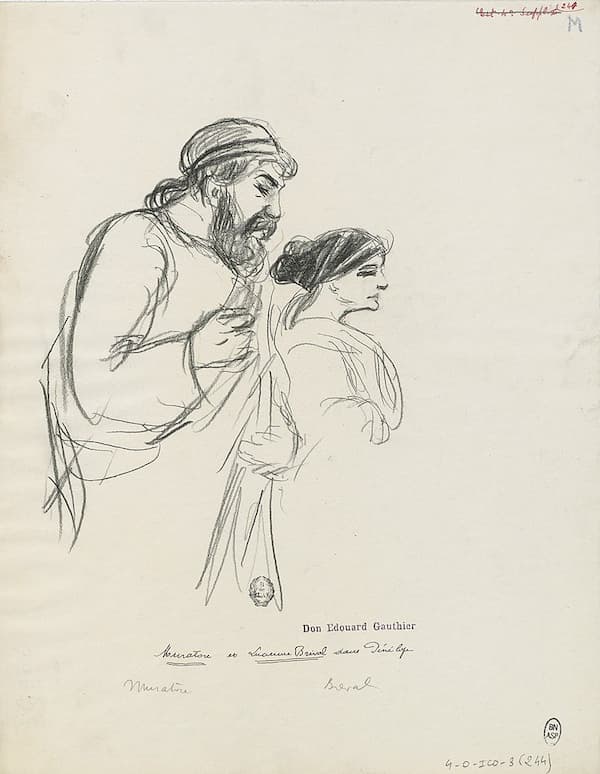
Charles Delaroche: Lucien Muratore and Lucienne Bréval as Ulysse and Pénélope, Paris, 1913 (Gallica: cb42042868w)
Fauré’s work on the opera spanned five years: he started it in 1907, worked on it for the next five summers in Lausanne and Lugano, Switzerland, put it aside in 1910, and then completed it for its Monte Carlo debut in 1913. Although the Monte Carlo premiere was not a success, due to the distraction of the theatre’s director with his own opera that opened 4 days later, but Fauré was still pleased, considering the Monte Carlo premiere only as a ‘rehearsal for Paris’.
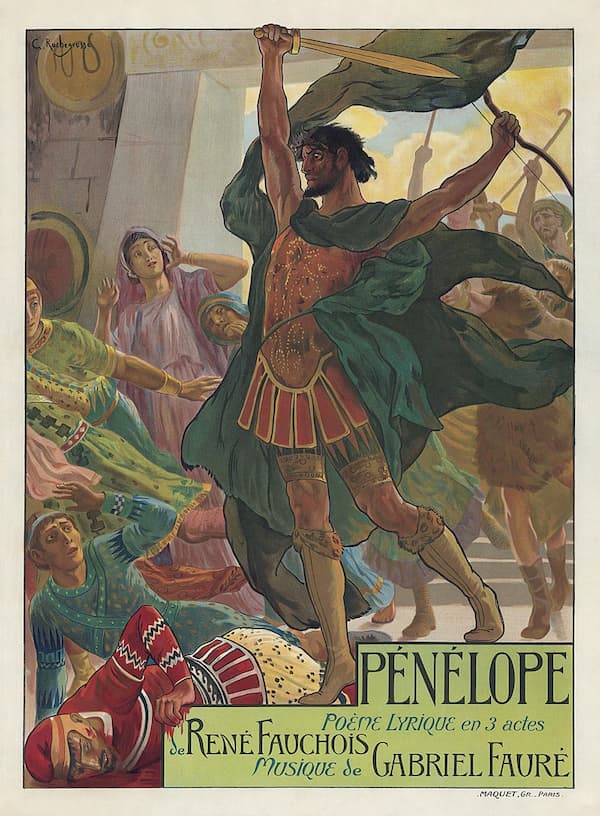
Georges Rochegrosse: Poster for Pénélope at the Théâtre des Champs,10 May 1913 (Gallica: btv1b532216218)
Pénélope’s Paris opening was on 10 May 1913 and was a triumph. Unfortunately, the opera shared the stage with a work that not only became much more famous, if not infamous, but that completely eclipsed it: Stravinsky’s Rite of Spring. Despite its opening night success, the opera has never entered the repertoire. The Théâtre des Champs-Elysées went bankrupt in October 1913, and the set and costumes for Fauré’s opera were sold. A planned revival at the Opéra-Comique was delayed for five years by World War I. There was a staging in Antwerp and in the Roman theatre at Orange in the early 1920s.
The opera is based on Ulysses’ return after a thirty-year absence at the Trojan War (and his torturous way back). The Prélude carries two themes: Pénélope’s ‘spacious, solemn, expressive’ motif in G minor and Ulysses’ contrasting theme.
In the work, Fauré tackles the problem of post-Wagnerian opera. The description ‘song opera’ has been applied to it, since it avoids both the classical recitative-aria pairing and Wagner’s continuous melodic composition. Instead, it’s made up of ‘a sequence of short lyrical flights, without repetition, linked by passages of arioso and, less often, plain recitative, sometimes without accompaniment’.
Fauré was careful to balance the voices and the orchestra, with the orchestra often taking on the nature of a character itself, using leitmotifs to comment on the action. A parallel can be seen in Debussy’s Pelléas et Mélisande, but with a very different final outcome. It was a powerful masterpiece, but more a masterpiece of pure music than opera. The work calls for a full symphony orchestra plus triple woodwinds. The only part of the opera that has entered the repertoire is the Prélude.
Gabriel Fauré: Pénélope – Prelude. (Deutsches Symphonie-Orchester Berlin; Robin Ticciati, cond.)
For more of the best in classical music, sign up for our E-Newsletter

